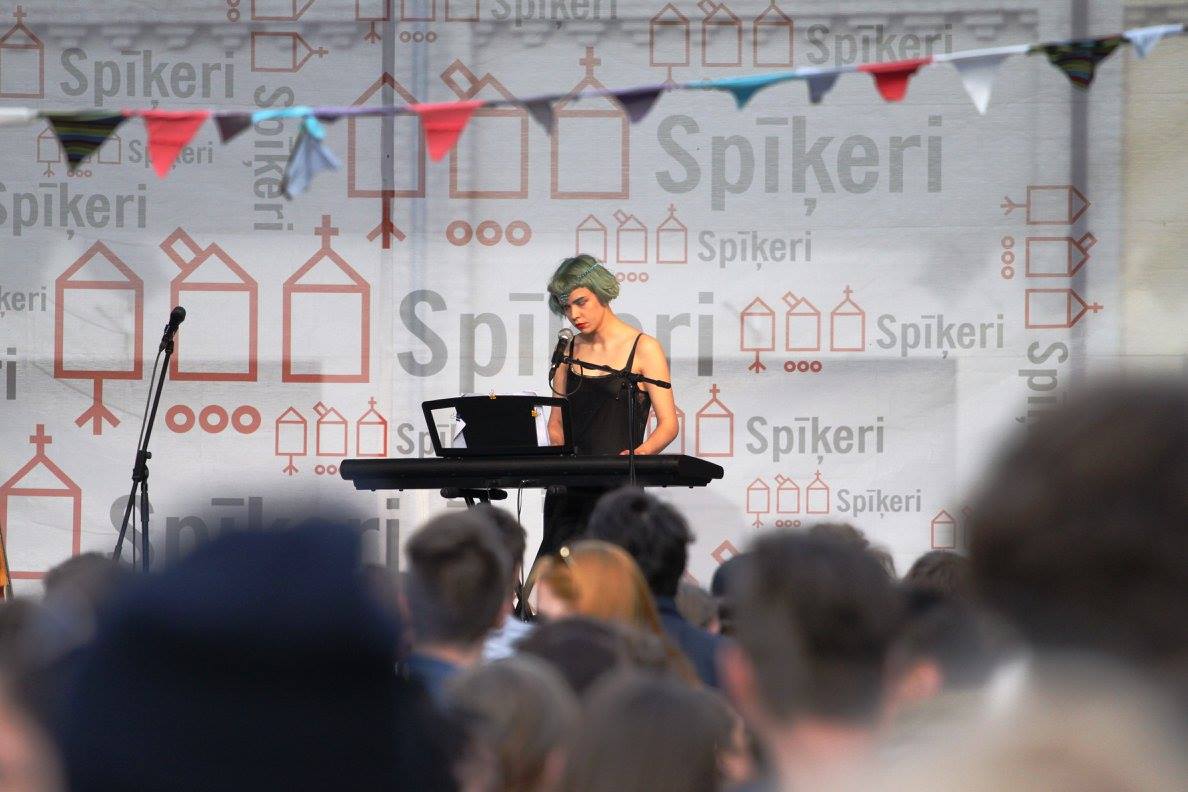Not far from the old town, behind the impressive market halls, on the banks of the Daugava River hides a very special district, the Spīķeri Quarter, an old warehouse area. Belonging to the famous and notorious Moscow Suburb this place transformed in a few years to a truly insider tip.
The actual Spīķeri Quarter seems downright like a small factory town. It is a closed district development and is passed inside with 13 individual buildings. From the original 58 buildings just these are still preserved. All buildings were built as very massive brick buildings. Thanks to the high-quality fabric, the buildings could be renovated and revived gradually gently in recent years. It has been able to preserve as much as possible while still creating good conditions for the new tenant. As in many old industrial quarters in European cities, Spikeri Quarter, too, is become a home to the arts, restaurants, and offices. On the area is an independent theater (Dirty Deal), a contemporary arts center “kim?”, an arthouse coffeeshop (Café Dali), a few restaurants, a press agency, a center for electronic arts and media (RICX), a concert hall and many other residents.
Since the 14th century the Spīķeri Quarter had a wharf and was used for loading and unloading cargo ships. Most of the warehouses were built in the 1860s –1880s after the demolition of Riga Fortress. Mainly stored in these buildings were tobacco, wool, lime and hamp. The whole Spīķeri Quarter was developed in collaboration with the best designers and architects of the Baltic States. However, the warehouses were used for storage purposes for about a century till 1903. Due to the development of the railway and the growing number of carriage of goods increased the need for bigger warehouses and the Spīķeri Quarter lose its functional significance. Moreover, during the construction of the central market (1924-1930) a part of the building was demolished.
At least since the year 2000 the warehouse area was known throughout the city as an abandoned terrain. In 2008 creative organizations and companies choose the warehouse area as their new home base. In 2012 started the work on the reconstruction of the Spīķeri Quarter and the quay of Daugava River in cooperation with the Mayor of Riga and the Urban Development Committee. They could successfully revitalize the quarter between the Maskavas, Krasta and Turgeņeva Street as well as the 1.3 km long waterfront area and turning it into a publicly available area which can be used by residents and tourists.
 At the end a new center of culture and recreation with new restaurants, cafes, shops and galleries has arisen. It is one of the hottest places in Riga and should definitely be visited. During the warm time of year, Spikeri Quarter offers a wide choice of open-air events, concerts, sporty activities and other entertainment, which are free of charge.
At the end a new center of culture and recreation with new restaurants, cafes, shops and galleries has arisen. It is one of the hottest places in Riga and should definitely be visited. During the warm time of year, Spikeri Quarter offers a wide choice of open-air events, concerts, sporty activities and other entertainment, which are free of charge.
Very popular and highly recommended is the flea market where you can find not only practical things for everyday life, but also designer items.
Especially cheerful is the sports week. The daily changing sports arouse not only the spirits, it is also a good opportunity to get in touch with locals.
At the concerts, which are organized on each Wednesday, you get the perfect opportunity to enjoy an amazing evening, getting to know local bands and listening to excellent music. 
For recreation invites the nearby promenade at the river. There you can relax, sit in the sun, look at the water and let your mind wander and truly relax. For great or small appetites you should try the Georgian restaurant “Pirosmani”. They serve delicious original Georgian meals, the service is very friendly and the price moderate. Even than through the mirrored doors and windows sometimes everything on the Spīķeri Quarter looks closed, only courage, the cafes, restaurants, shops and museums are opened and the people are very welcoming.
But the Spīķeri Quarter walks not just on the bride side; here you can also get an overview about the dark times of the warehouse area. During the Second World War here was the Riga ghetto where mostly Russian traders and Jews lived. More about the history of this dark chapter can be experienced in the Riga Ghetto Museum, which offered an interesting as well as atmospheric exhibition about the Holocaust and Jewish life in Latvia.
The Spīķeri Quarter is not in vain part of the UNESCO Cultural Heritage. On the area are also organized big events, which are part of the main annual festivities of the city. Like the White Night Festival, which constitute the contemporary culture forum and a night of creative awareness or the Riga City Festival, which is a kaleidoscope of musical, artistic, theatrical and dance performances, sports events and attractions. But also the Night of Museums, the Riga Restaurant Week and other more. A look at the website and the calendar of events is worthwhile in any case.
Enjoy the events and recreation on the Spīķeri Quarter!






